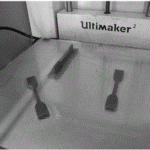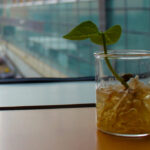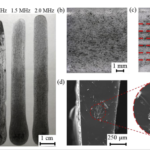

International researchers continue in the quest to use new materials for modern applications, outlining how porosity affects macroporous diatomite-based foams in the recently published ‘Process strategy to fabricate a hierarchical porosity gradient in diatomite-based foams by 3D printing.’
In this study, the researchers wanted to design porous ceramics that could ultimately serve as a ‘bioinspired’ product using the natural material, diatomite. In the hopes that 3D printing could improve graded foams, the researchers are looking toward greater ease and accuracy in the production of templates and molds. In using stereolithography (SLA), the team was able to produce samples of polymeric templates as they combined macropores with diatomite-based foams.
In creating a solid ceramic matrix with diatomite, the researchers selected alkali-bonded ceramics or chemically bonded ceramics (CBCs) due to their potential for use in a variety of applications.
“CBCs are produced through a chemical reaction, consisting of a polycondensation of silica phases dissolved in a strong alkaline environment at low temperature, in contrast to traditional ceramic materials that are usually produced using fusion or sintering processes at elevated temperature,” explained the researchers.
During the process created for this study, the researchers ‘guarantee the presence of both microscopic- and macroscopic-scale porosity.’ Three different samples were printed as the team tested the template geometry of the microstructure. Each template was ‘impregnated’ with the slurry, with the systems cured and set at ‘room humidity’ for 24 hours.

No shrinkage or swelling were evident upon curing, and samples were still solid even after thermal treatment, leaving the researchers to note that the template removal process worked, and the chosen parameters were correct.
Micropores were identified easily, and the researchers noted that all the foam samples exhibited the desired ‘regularity’ of structure. No cracks or cavities occurred, and macropores were still intact even after the ‘burning out of the sacrificial template.’
“The indirect inverse replica approach allowed to overcome some of the limitations of other AM techniques, especially of the direct printing,” concluded the researchers. “In fact, in this process, templates and molds can be produced with high accuracy with common polymers, taking advantage of freedom and shape possibilities provided by this technique and avoiding limitations, in terms of homogeneity and microstructure control of the final ceramic part, filling the templates with suitable slurries.
“Moreover, it has been found out that the presence of this porosity of graded dimensions affects the mechanical properties of the macroporous diatomite-based foams causing a toughening effect. Finally, ranging from three orders of magnitudes macro, micro and nano, it is possible to properly tailor the foam porosity according to the final properties desired.”
While the researchers have performed unique experimentation here, 3D printing with foam has been the topic of studies from printing with polyurethane to creating foamed concrete panels to graphene, and more. What do you think of this news? Let us know your thoughts; join the discussion of this and other 3D printing topics at 3DPrintBoard.com.
[Source / Images: ‘Process strategy to fabricate a hierarchical porosity gradient in diatomite-based foams by 3D printing’]
If you're looking to get architectural 3D animation in the USA, our service provides an exceptional way to bring your architectural concepts to life through dynamic, immersive visuals. Through our platform, you can easily request high-quality 3D animations that showcase your designs in motion, offering a detailed view of your project from multiple angles and perspectives. Whether it's for a real estate development, a commercial building, or an urban planning project, our expert team ensures that every detail is captured in a visually compelling animation.
Through our website, you can seamlessly get architectural 3D animation tailored to your project’s specific needs. With our help, you can offer potential clients or investors an engaging experience that goes beyond static images. By integrating CGI animations with real-world settings, lighting, and textures, our team creates a lifelike experience that allows your audience to interact with your project as though it were already built. This service is perfect for presenting complex designs in a clear, visually attractive way that stands out in the competitive architectural market.




